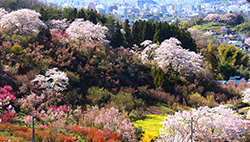Creating Sake: “Fukushima has the ideal fermentation environment for moromi” Sake that Reflects Its Local Roots
Fermentation expert Professor Takeo Koizumi was born to a family of sake brewers in Fukushima and raised surrounded by the aroma of sake. He shares his love for the local community and fermentation, and discusses everything from why Fukushima’s sake is so good to the best snacks to pair with it.
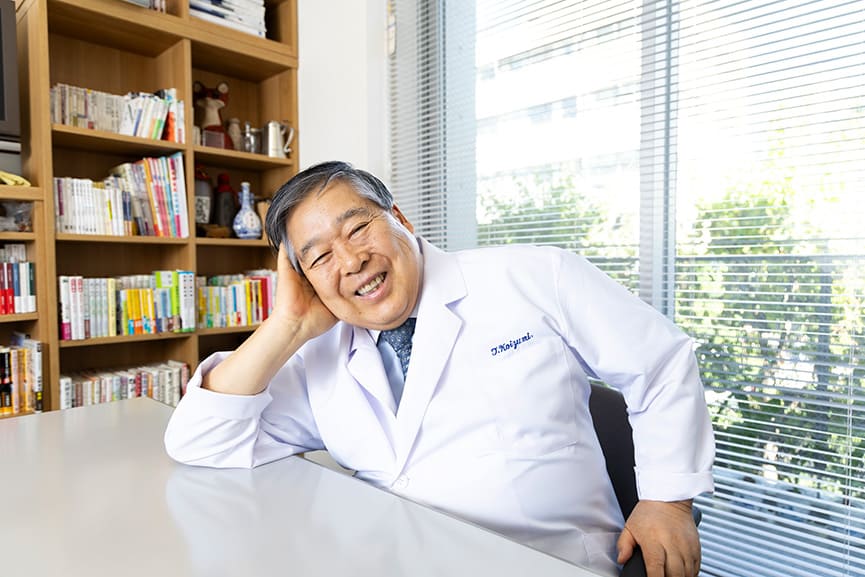
Profile
Takeo Koizumi, a fermentation scientist and writer, was born in 1943 in the town of Ono in Fukushima Prefecture. His areas of specialization include fermentation science, brewing science, and food culture. Takeo is an honorary professor at the Tokyo University of Agriculture, and has published over 140 books, including his recent work "Kuma no niku niwa ame ga au (Candy Goes Well with Bear Meat)". He currently serves as a visiting professor at Fukushima University, Kagoshima University and other institutions.
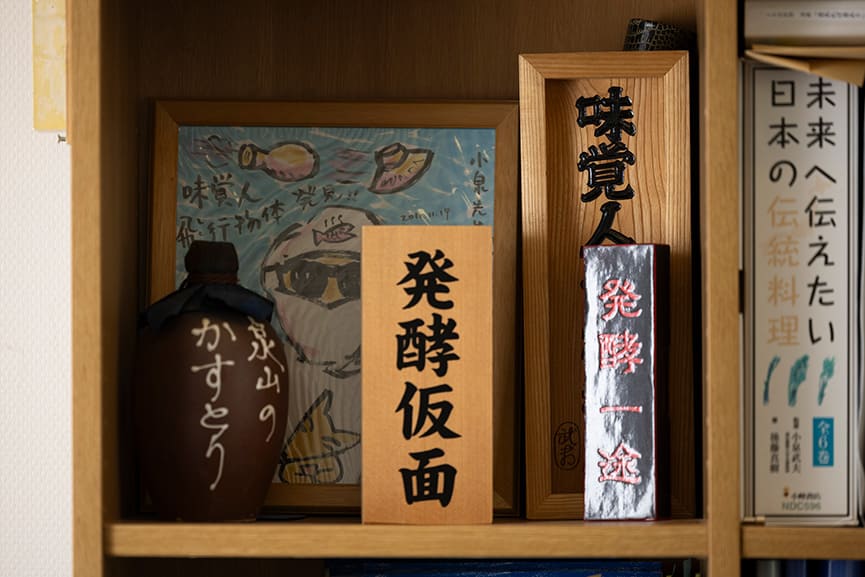
——Tell us about your childhood growing up in a sake brewery in Ono.
Since my family owned a sake brewery, during the early mornings of the brewing season we would steam rice in large cauldrons. The aroma was so good it made my stomach rumble, serving as my morning wake-up call.
If you climb up the 965 meter-tall Mount Yadaijin in Ono, you can catch a glimpse of the Pacific Ocean. From a young age, I ate fish that was landed at Onahama Port in neighboring Iwaki City every day.
Most of the fish landed in Onahama are bonito, followed by sardines, pacific sauries, and mackerel. Fish caught in the tide line along Fukushima’s coast, where the cold and warm currents collide, are incredibly delicious. We also often ate game such as pheasant and wild birds caught in the surrounding Abukuma mountains. We definitely never lacked for good sake accompaniments!
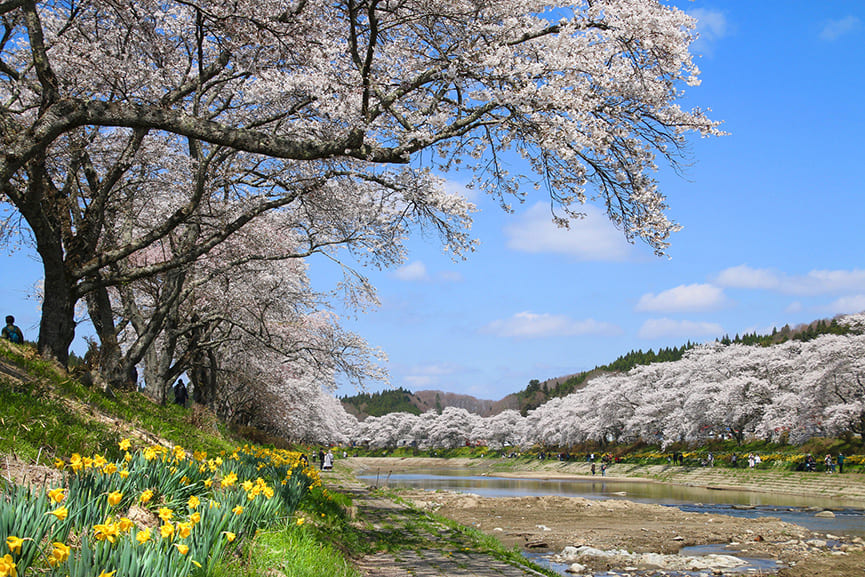
Ono is located in the natural beauty of the central part of Nakadori, Fukushima Prefecture. (The photo is of Ono’s famous natsui senbon zakura cherry blossoms)
——Did you study brewing and fermentation sciences to take over your family business?
When I was a junior in high school, I wanted to become a science teacher. However, just before taking the college entrance exams, my family's sake brewery merged with three others and relocated to Koriyama. They needed new technical staff for this new brewery, so I promptly changed my career path and enrolled in the fermentation science department at the Tokyo University of Agriculture, the only one of its kind in Japan. Looking back, that decision was absolutely the right one!
During the course, all students would brew their own barrels of sake. While observing yeast, lactic acid bacteria, and koji mold under the microscope almost every day, I truly fell in love with the process of fermentation. I became engrossed in research afterward and ultimately did not end up joining the brewery in Koriyama.
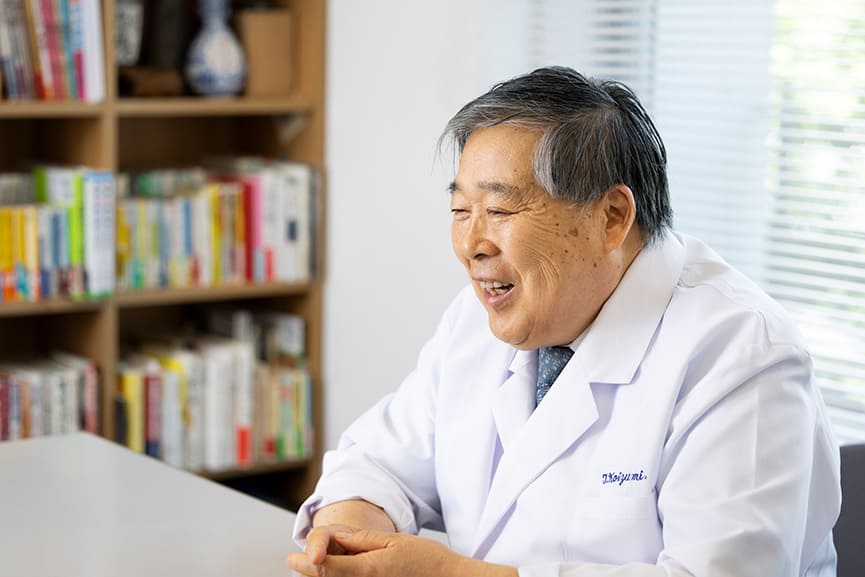
——Can you share about how you were involved in the development of original sake in your hometown of Ono?
The mayor consulted me about revitalizing the town and proposed developing an original sake. We based ourselves at the Okunomatsu Brewery, only used Fukunoka sake rice cultivated in Ono, and entrusted the brewing to Keiichi Tonokawa, a nationally designated master craftsman with exceptional skills who also happens to be a former student of mine. The result was a junmai ginjo sake named Todo-san Kachi Uma.
Ono was once known for its horse breeding and also has a temple that enshrines Todo-san, a Bodhisattva with the head of a horse. Additionally, Fukushima City is home to the Fukushima Racecourse, which attracts people from all over the country. These things make this sake very popular because people like horse racing enthusiasts and baseball supporters find it auspicious, and it sells out every year in no time. It has a fragrant clean taste, sharp and fleeting. Todo-san Kachi Uma is a really excellent sake!

Todo-san Kachi Uma, an original sake made from sake rice cultivated in Ono
——Why is Fukushima's environment suitable for sake brewing?
Fukushima Prefecture has many basins such as the Fukushima Basin, Koriyama Basin, and Aizu Basin, with groundwater springing from all directions from the surrounding mountains. Rainwater penetrates the rocky strata and becomes subterranean water that seeps from the mountains. It is rich in the minerals, which act as a nutrient source for yeast. This water vigorously assists the fermentation of sake.
Additionally, the significant temperature differences between day and night in the basin's microclimate provide ideal conditions for cultivating high-quality sake rice. In winter, the sake breweries in Fukushima are very cold. The cold seeps up from the ground, and let me tell you, it's freezing! But this environment is ideal for the fermentation of moromi (mash).
——In recent years, Fukushima's sake has received high praise nationally, achieving the unprecedented feat of winning the largest number of gold awards at the Annual Japan Sake Awards nine years in a row, solidifying a reputation as being the top sake region in Japan. What has contributed to this success?
I think we largely owe it to Kenji Suzuki, a former member of the Fukushima High-Tech Plaza, who played a significant role in actively guiding the local brewers with brewing ginjo sake. Additionally, the active exchange of technical know-how among sake breweries and the recent turnover in brewery owners, which brought fresh new sensibilities into the field, have been important. Essentially I believe this phrase sums it up: to brew sake you need to cultivate brewers.
——What local dishes go well with Fukushima’s sake?
There are countless delicious foods in Fukushima, you would need multiple stomaches to try them all! But these are my favorites from each of the three regions. In Hamadori, I particularly enjoy grilled sea urchin in a shell, which is a local delicacy of Iwaki City. It makes my mouth water, and it pairs beautifully with sake…although it's quite pricy. Another pick from the same region is kimomi, a blend of raw monkfish.
In Nakadori, my favorite is ika ninjin (squid and carrots). Also, the shishinabe (wild boar hot pot) from the southern part of the prefecture is exceptional. The natural wild boar meat is so rich and irresistible.
In Aizu, pickled herring with Japanese pepper is a must-try. Oh, and don't forget soba noodles! There are just too many delicious things in Fukushima to choose from.
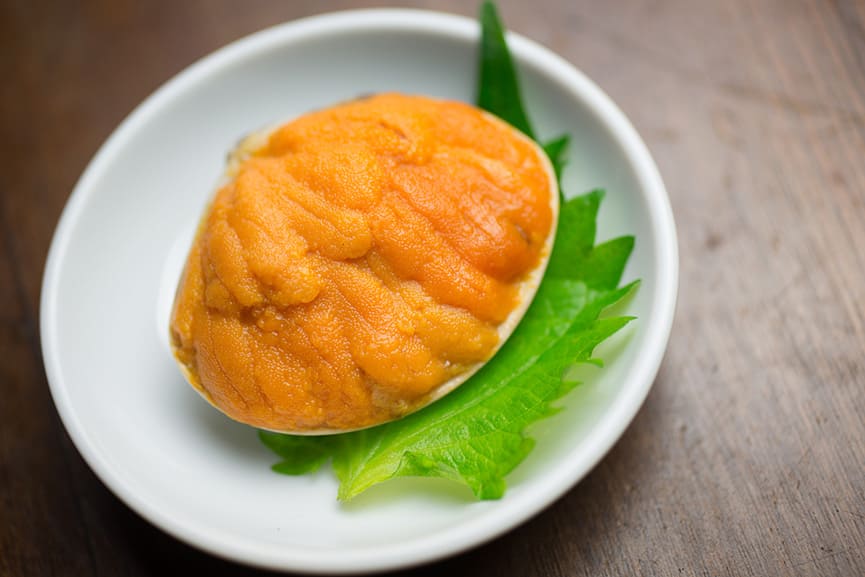
Grilled sea urchin in a shell, a dish said to have originated in Iwaki. Raw sea urchin is mounded in a clam shell and steam-grilled.
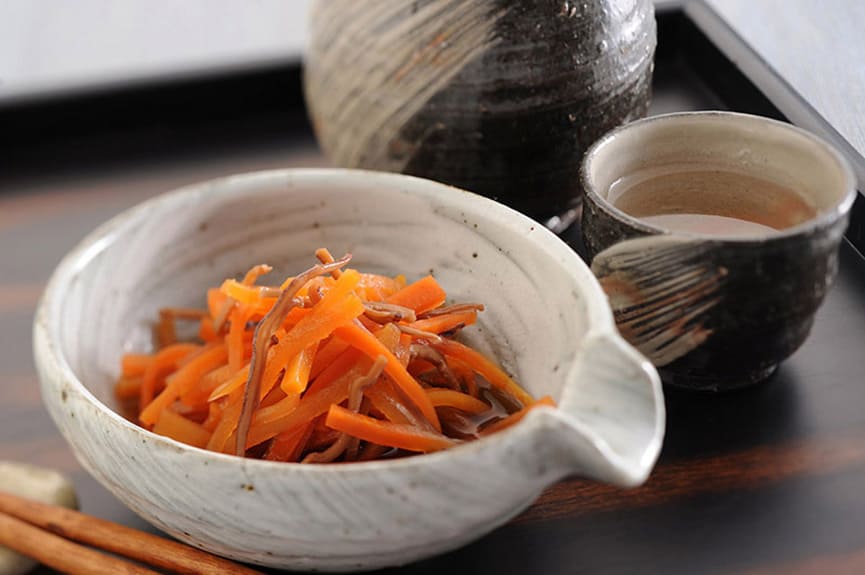
Ika ninjin a dish from the northern part of Nakadori, made by marinating dried squid and carrots in a secret soy sauce marinade.
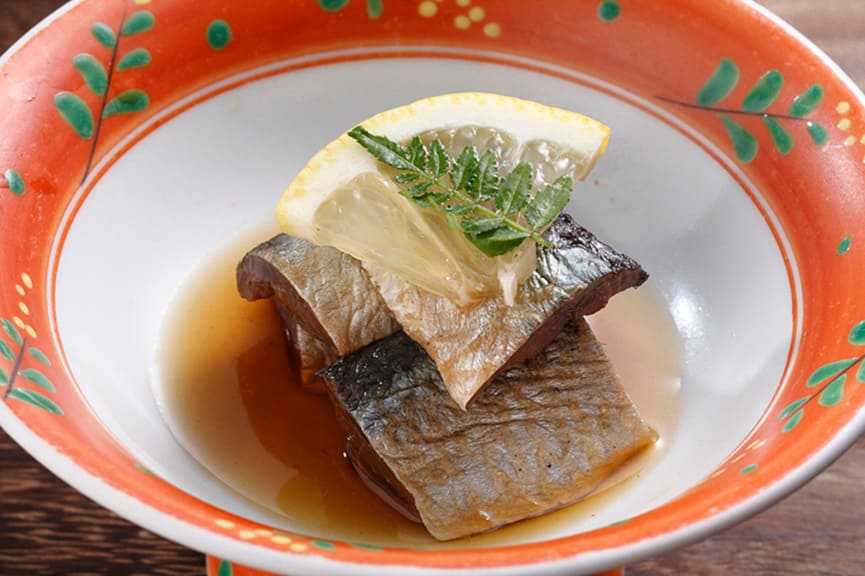
Pickled herring with Japanese pepper is a beloved staple from the Aizu region, made by pickling sliced herring in Japanese pepper leaves, soy sauce, sake, vinegar, and other seasonings.
——Any last thoughts?
Right now, Fukushima sake is all about top-notch quality and rarity. But we mustn't get carried away. Just because it's selling well, we shouldn't aim to rapidly expand the scale of the breweries. We must not lose sight of upholding the current standards and producing excellent sake. While it's great that people all around Japan buy our sake, it's equally important for local people to enjoy and take pride in it. Just as I tell my students: never forget your roots.
